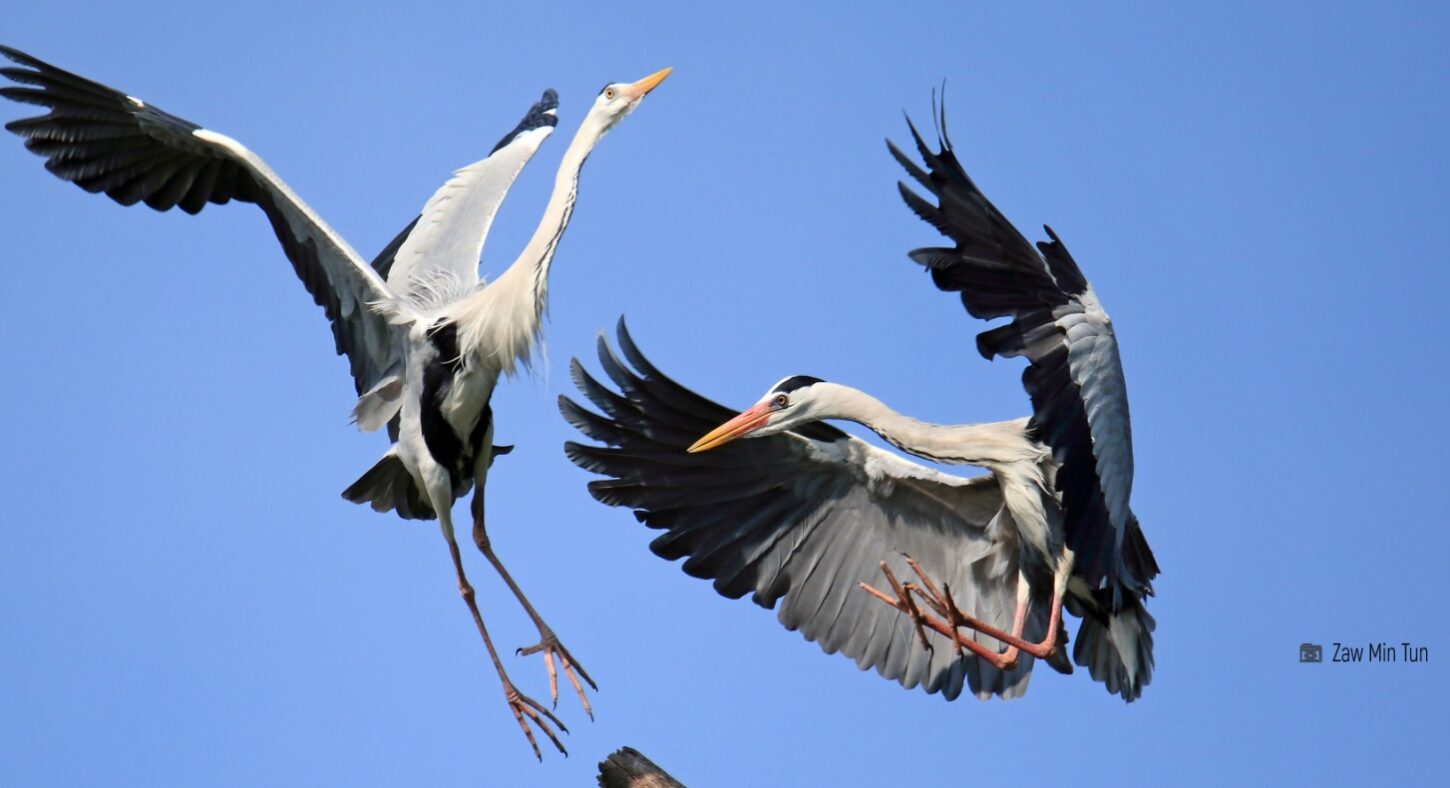Dimming the lights for birds at night

Migratory birds are vulnerable to the grave impacts of light pollution from the increasing use of artificial light at night.
Dr. Theresa Mundita S. Lim
Executive Director, ASEAN Centre for Biodiversity
14 May 2022 — Today, the ASEAN Centre for Biodiversity joins (ACB) the global celebration of World Migratory Bird Day. The theme, Dim the Lights for Birds at Night! enlightens us on the harmful impacts of the steadily increasing artificial light on biodiversity, including the scores of birds that migrate from north to south.
Natural light is essential to any species’ survival – it supports food production, mobility, vision and other physiological processes, as well as “adaptation to diurnal and seasonal changes” (Jägerbrand and Bouroussis, 2021). However, the amount of artificial light – often found in urban and industrial areas – has been increasing by at least two per cent per year, leading to a ‘worldwide phenomenon’ of light pollution or the emission of artificial light at night (ALAN) (Sordello, et al, 2022).
Studies correlate the increased use of artificial light to rapid urbanisation, with cities and industrial zones requiring illumination for operations and protection of human life and property (IUCN, 2021). Bright sources such as street lamps, shopping malls, skyscrapers, neon signs, and billboards cast upward light visible at tens or even hundreds of kilometres away.
The impact of light pollution on biodiversity is serious and can even be grave. Nocturnally migrating birds such as ducks, geese, plovers, sandpipers, and songbirds are vulnerable to light pollution. Excessive artificial light can disorient seabirds such as petrels and shearwaters and cause collisions with brightly-lit ships at sea and various structures on land. Birds can be attracted to artificial light at night, or be averse to it – either way, it can disrupt the migratory routes of these wildlife and even affect their behaviour such as foraging and vocal communication. The United Nations Environment Programme (UNEP) and Convention on Migratory Species (CMS) joint resolution during the 13th Conference of Parties state that even the behaviour of insects, which some migratory species prey on, is also negatively influenced, thus affecting their food and sustenance.
With the ASEAN located at the heart of the East Asian-Australasian Flyway, it is essential for the region to raise awareness on the issue of light pollution and its impacts on the scores of migratory birds passing by the flyway. At the global level, guidelines and campaigns on light pollution and how it can be reduced are already taking flight, with the CMS endorsing management principles such as promoting natural darkness and the use of adaptive light controls and appropriate materials that only emit harmless wavelengths and keeps light directed to the ground.
Additionally, the International Union for the Conservation of Nature (IUCN) adopted a motion on light pollution in 2021 during the IUCN Congress in France promoting dark infrastructure, which identifies natural darkness as an additional quality criterion for ecological networks.
We at the ASEAN Centre for Biodiversity (ACB) are keen to support the ASEAN Member States in aligning these criteria with existing initiatives integrating biodiversity in cities and urban areas in the region. As a regional centre of excellence for biodiversity, the ACB stands ready to support discussions that can shed light on conservation strategies that take into account light pollution and the significance of natural darkness, whose own conservation value is comparable to having clean water, air, and soil.
Today’s celebrations will give us a bird’s eye view of the emerging and important issue of light pollution. It is incumbent upon us to learn more and understand deeper the implications of artificial light to the region’s biodiversity, and the migratory birds that our rich ecosystems support. From small actions such as dimming our lights at night, to initiating the development of conservation strategies and approaches, we can protect migratory species from the harmful impact of light pollution.
Happy World Migratory Bird Day!
#
